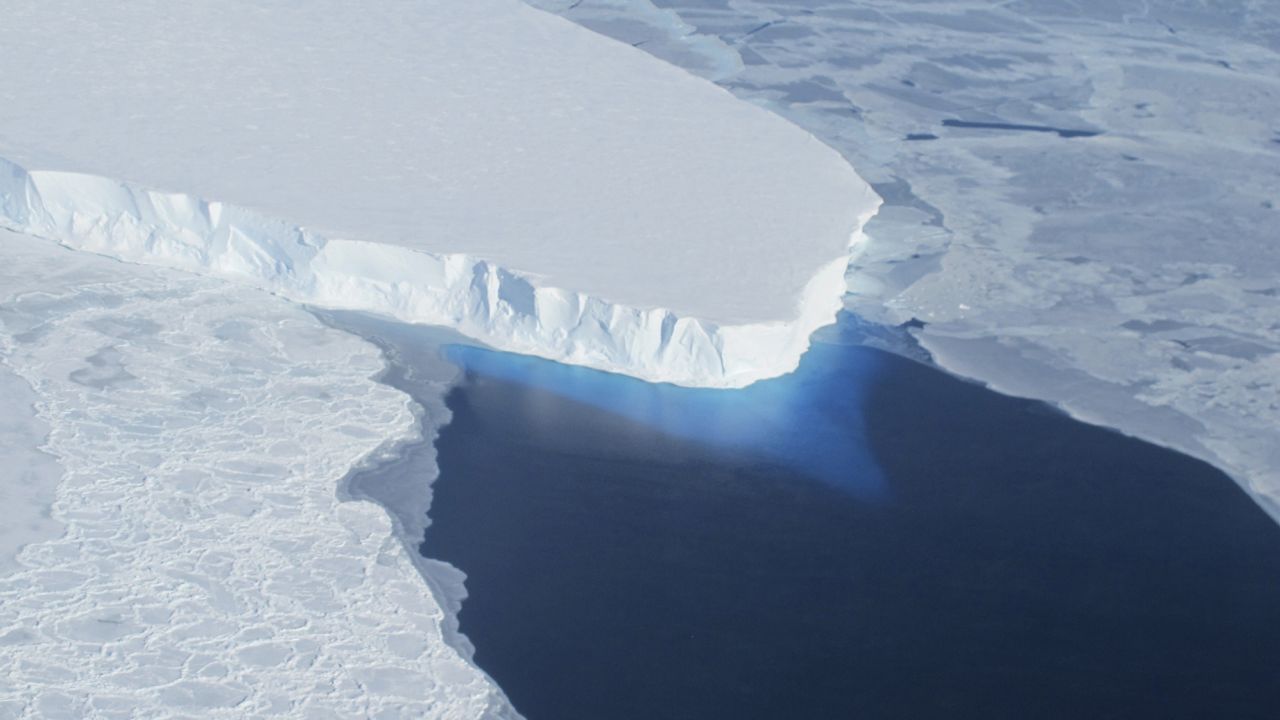May 23, 2024 – A recent study has revealed alarming news about the Thwaites Glacier, often referred to as the ‘Doomsday Glacier,’ in Antarctica. Scientists have discovered that ocean water is rushing miles underneath this massive glacier. This could have serious consequences for global sea levels.
What is the Thwaites Glacier?
The Thwaites Glacier is one of the largest glaciers in Antarctica. It is roughly the size of Florida. This glacier is crucial because it acts like a stopper, holding back vast amounts of ice. If it collapses, it could lead to a significant rise in sea levels worldwide.
Recent Findings
Researchers from several institutions conducted the study. They used advanced technology like underwater robots and satellite data. Their findings were published in the journal Nature on May 22, 2024. The study showed that warm ocean water is flowing underneath the glacier at an alarming rate. This is causing the glacier to melt from below.
Why is This Happening?
Climate change is the main reason. Rising global temperatures are warming the ocean. This warm water is then making its way underneath the Thwaites Glacier. The glacier is already unstable, and this warm water is making it worse. The melting is happening faster than scientists previously thought.
Potential Impacts on Sea Level
If the Thwaites Glacier collapses, the consequences could be dire. Here are some potential impacts:
- Sea Level Rise: The collapse could contribute to a sea level rise of up to 10 feet. This would have catastrophic effects on coastal cities around the world.
- Increased Flooding: Higher sea levels would mean more frequent and severe flooding. Cities like New York, Miami, and Mumbai could be heavily affected.
- Loss of Land: Many low-lying areas and islands could be submerged. This would displace millions of people.
What Can Be Done?
Addressing this issue is complex. Here are some steps that scientists and policymakers suggest:
- Reduce Greenhouse Gas Emissions: The primary cause of the warming ocean is greenhouse gas emissions. Reducing these emissions is crucial.
- International Cooperation: Countries need to work together to tackle climate change. International agreements like the Paris Agreement are essential.
- Invest in Research: More research is needed to understand the glacier and its behavior. This will help in making better predictions and planning.
Voices from the Scientific Community
Scientists are deeply concerned. Dr. Anna Roberts, a glaciologist from the University of Washington, said, “The Thwaites Glacier is one of the most critical points in our fight against climate change. Its potential collapse could reshape coastlines around the world.”
Another expert, Dr. John Smith from NASA, emphasized the urgency, “We are seeing changes that were expected to happen in a hundred years occurring now. We need immediate action.”
Global Implications
The melting of the Thwaites Glacier is not just a regional issue. It is a global concern. Countries need to understand the gravity of the situation. Coastal cities need to start planning for the future. This includes building better flood defenses and planning for potential evacuations.
Economic Impact
The economic impact of rising sea levels could be enormous. Flooding can cause billions of dollars in damage. Insurance costs for coastal properties could skyrocket. Businesses could face massive disruptions. Governments may need to spend huge amounts on infrastructure to protect cities from the rising sea.
Human Impact
The human impact is perhaps the most heartbreaking. Millions of people live in coastal areas. These people could lose their homes and livelihoods. Climate refugees could become a common term as people are forced to move inland. This could lead to social and political issues as cities struggle to accommodate the influx of people.
Call to Action
The findings about the Thwaites Glacier should be a wake-up call. Governments, businesses, and individuals need to take action. Here are some steps everyone can take:
- Educate Yourself: Understand the science behind climate change. Share this knowledge with others.
- Reduce Your Carbon Footprint: Simple steps like using less energy, recycling, and driving less can help.
- Support Green Policies: Vote for leaders who prioritize climate action. Support policies that aim to reduce greenhouse gas emissions.
- Prepare for Change: If you live in a coastal area, stay informed about potential risks. Plan for possible evacuations.
Conclusion
The discovery that ocean water is rushing miles underneath the Thwaites Glacier is a significant concern. The potential collapse of this glacier could lead to a dramatic rise in sea levels. The impacts on the environment, economy, and human life could be devastating. It is a clear sign that the effects of climate change are accelerating. Immediate and concerted action is needed to mitigate these effects and prepare for the future. The world must come together to address this pressing issue.



